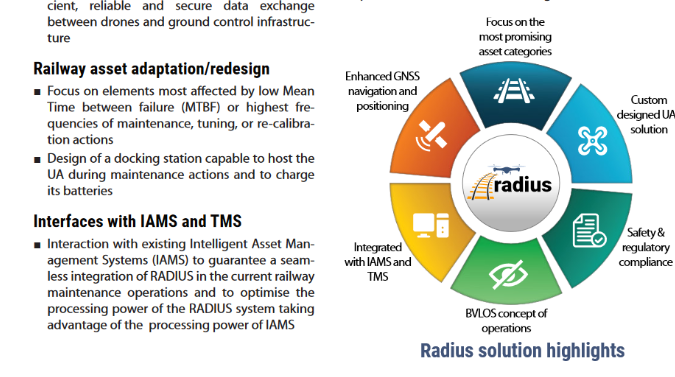
RADIUS teaser
A two-page doument describing the project.
On this section of the website, you will find the public documents generated by the Project. To download a document, please click on its card.

A two-page doument describing the project.
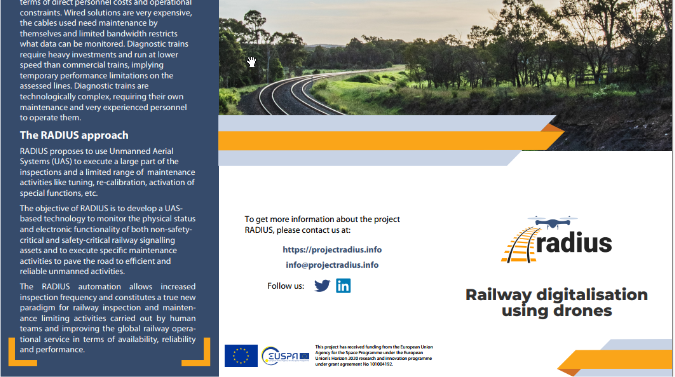
The trifold brochure describing the project RADIUS objectives and scope.
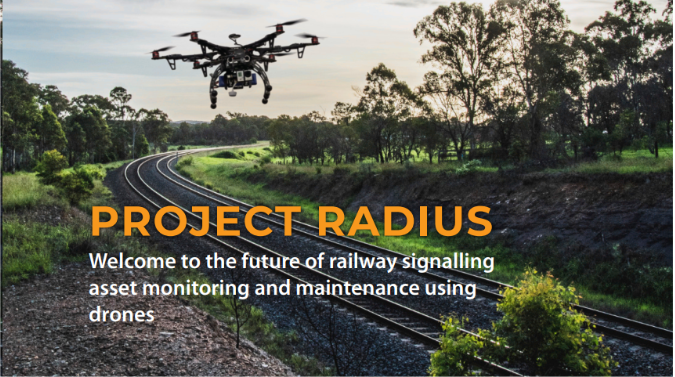
This white paper presents the objectives, results and conclusions of the project and it is intended for anyone interested in the applications of the RADIUS technology in the railway domain.
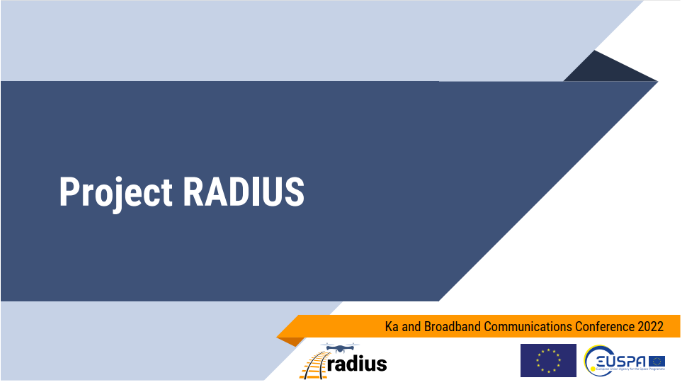
This is the presentation presented during the Ka Conference 2022 in Stresa (Italy) on October 20, 2022.
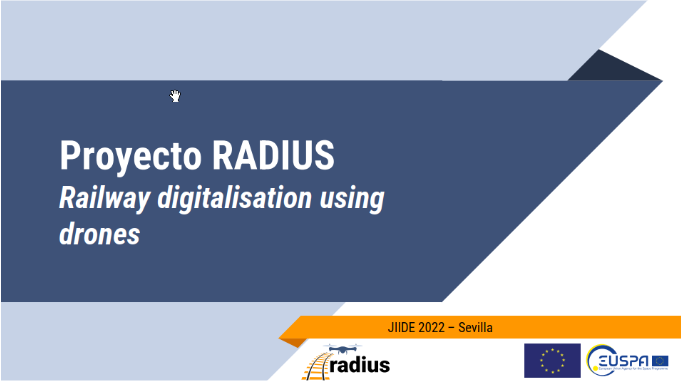
This is the presentation presented during the JIIDE 2022 conference in Seville (Spain) on October 27, 2022. Note that the presentation is in Spanish.
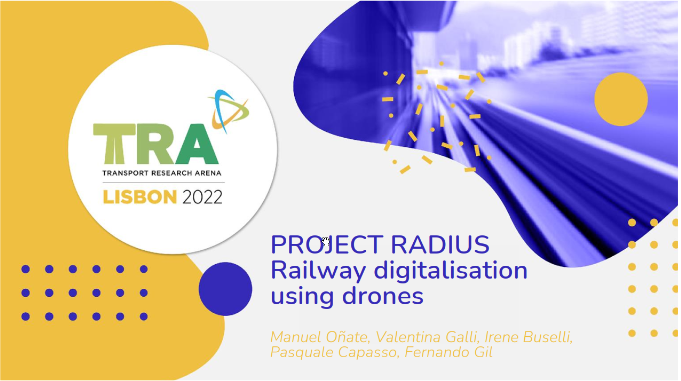
This is the presentation presented during the TRA 2022 conference in Lisbon (Portugal) on November 16, 2022.
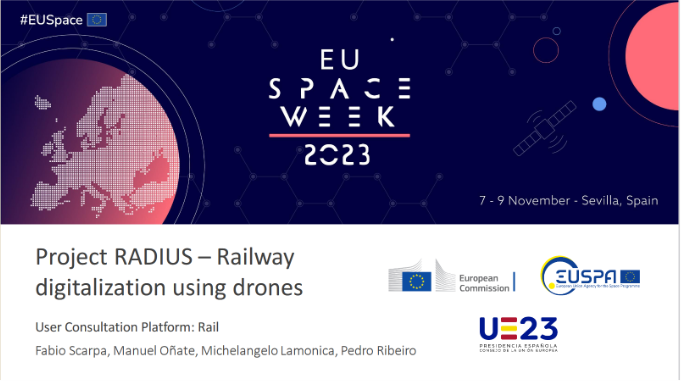
This is the presentation presented during the EU Space Week conference in Seville (Spain) on November 7, 2023.
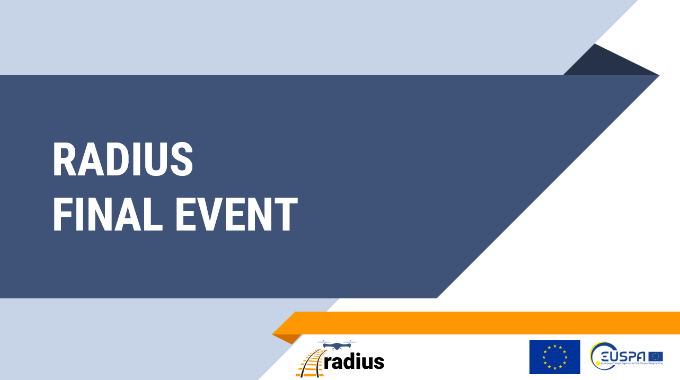
This is the presentation presented during the final event held in Rome (Italy) on October 18, 2023.
The following documents are the final deliverables made within the project that are marked as PUBLIC.
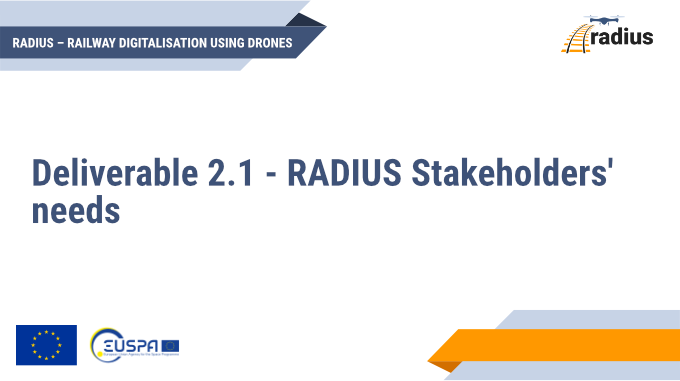
This document describes/reports the key analysis elements used to represent Stakeholders’ needs, with the aim of identifying a group of railway assets, monitoring and maintenance activities to pursue for future developments in the RADIUS project.
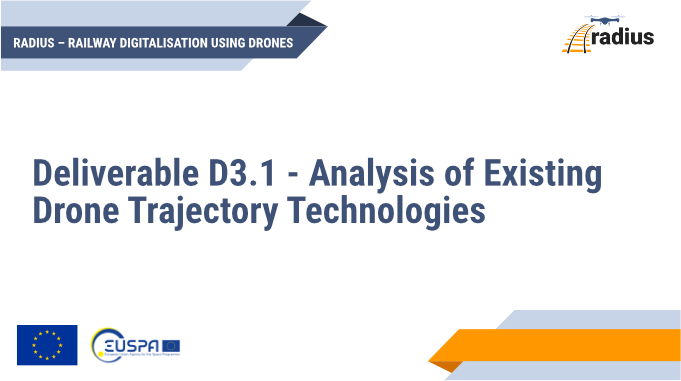
This paper analyses current state-of-the-art UAS navigation technology, while providing an in-depth analysis of different available levels of automation and human interaction to UAS operations to provide a critical assessment of current trajectory technologies, ranging from man-operated to fully autonomous navigation, to provide a basis to identify the optimal configuration for the project’s purpose.
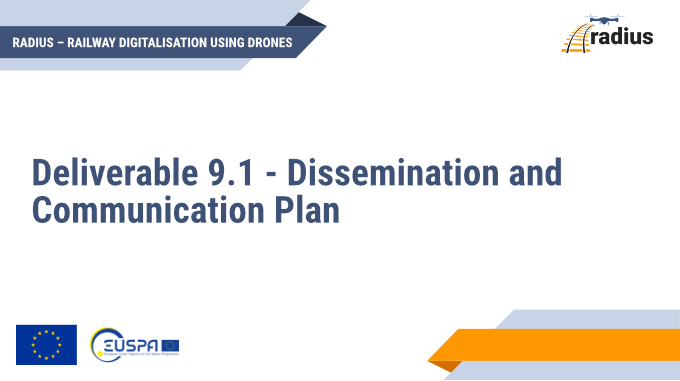
This document represents the Dissemination and Communication Plan (“DCP”) of the RADIUS project describing the project dissemination and communication strategy and its implementation plan to be used by the consortium to ensure the high visibility, accessibility and promotion of the project and its results during the grant period.
The following documents are the scientific dissemination products produced by the RADIUS project.
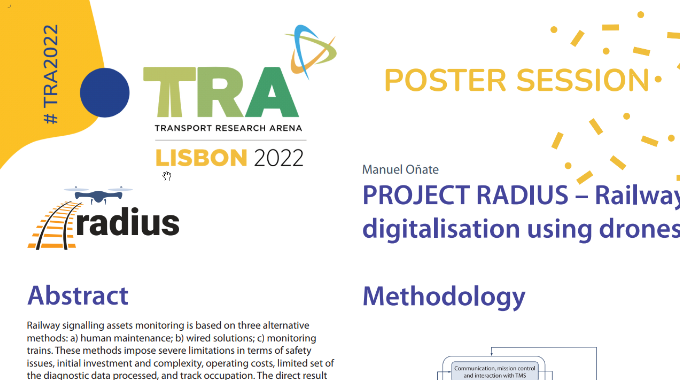
This is the poster presented in the Transportation Research Arena 2022 Conference held in Lisbon in Novembner 2022.
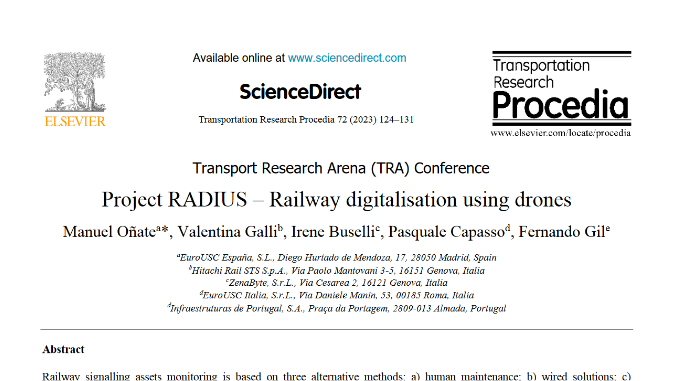
Railway signalling assets monitoring is based on three alternative methods: a) human maintenance; b) wired solutions; c) monitoring trains. These methods impose severe limitations in terms of safety issues, initial investment and complexity, operating costs, limited set of the diagnostic data processed, and track occupation. The direct result of these limitations is that the maintenance activities of railway lines are suboptimal, resulting in preventable failures that require expensive and disruptive reparations that imply the temporal interruption of the service in the affected tracks. RADIUS proposes to use Unmanned Aircraft Systems (UAS) or drones to execute a large part of the inspection and maintenance tasks of signalling assets that improve on the current methods but require compliance with aviation standards and regulation besides those existing in the railway environment.
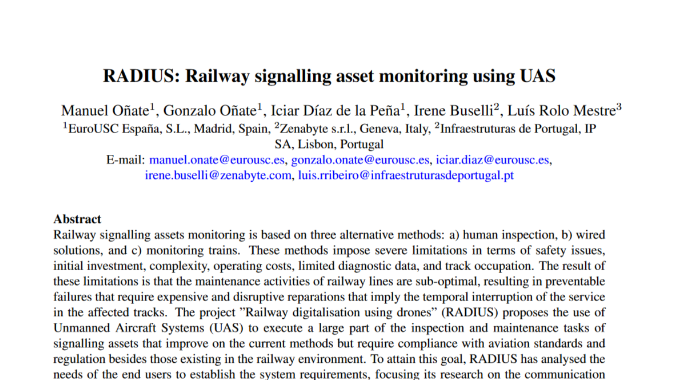
Railway signalling assets monitoring is based on three alternative methods: a) human inspection, b) wired solutions, and c) monitoring trains. These methods impose severe limitations in terms of safety issues, initial investment, complexity, operating costs, limited diagnostic data, and track occupation. The result of these limitations is that the maintenance activities of railway lines are sub-optimal, resulting in preventable failures that require expensive and disruptive reparations that imply the temporal interruption of the service in the affected tracks. The project ”Railway digitalisation using drones” (RADIUS) proposes the use of Unmanned Aircraft Systems (UAS) to execute a large part of the inspection and maintenance tasks of signalling assets that improve on the current methods but require compliance with aviation standards and regulation besides those existing in the railway environment. To attain this goal, RADIUS has analysed the needs of the end users, to establish the system requirements, focusing its research in the communication links between the different elements of the solution, signalling asset modification to interact with the UAS, and image processing to process the visual information gathered by the UAS. A custom docking station was created to extend the range and ensure commercial viability of the solution. The individual elements and the solution as a whole have been validated in a railway relevant environment. The result of the project has been satisfactory, paving the way for the use of DRONE technology in the railway sector.